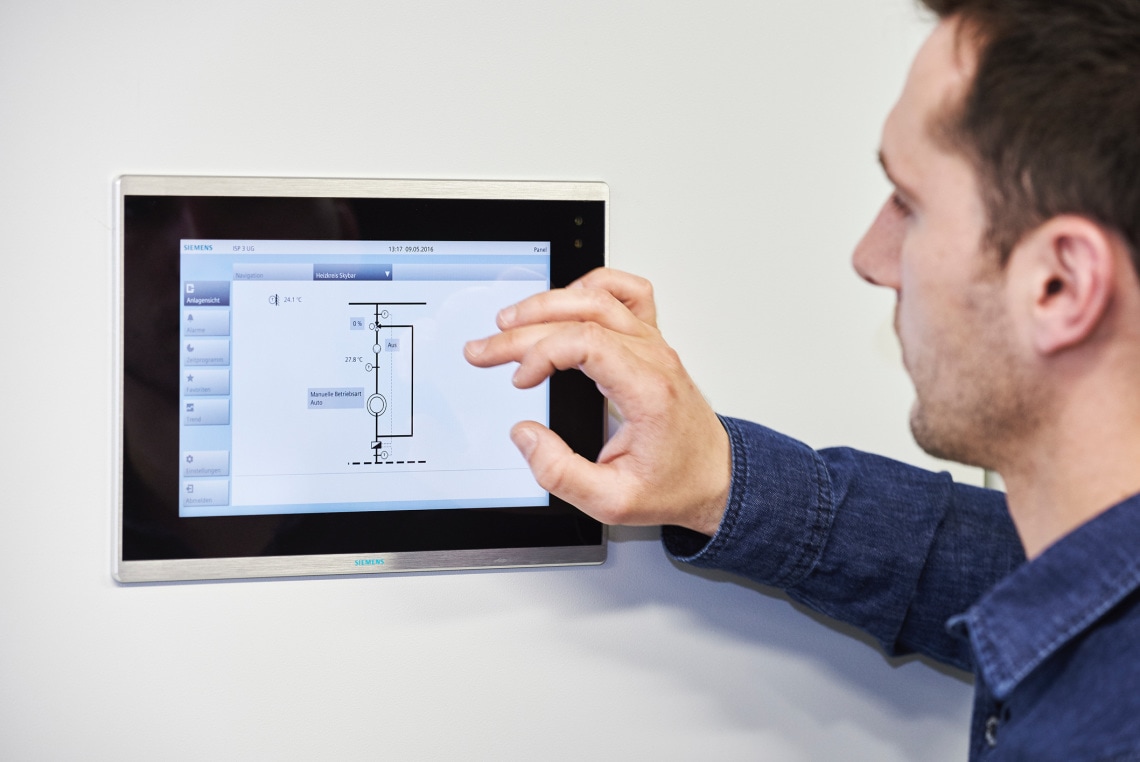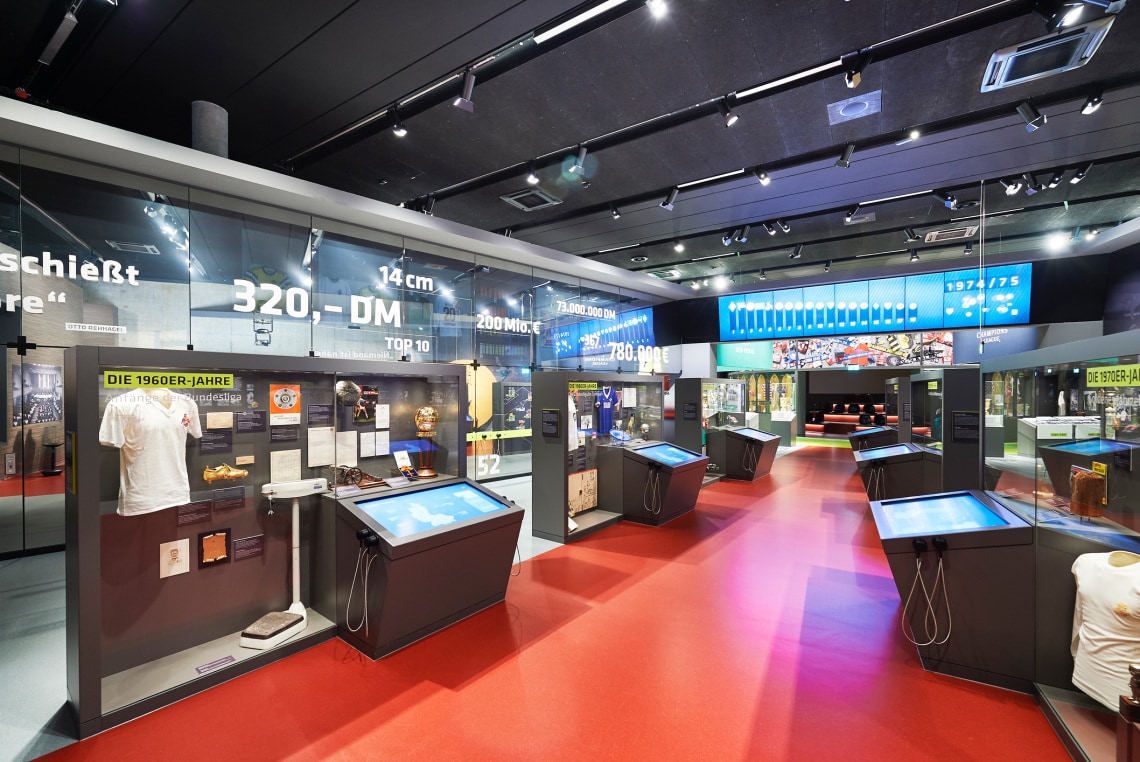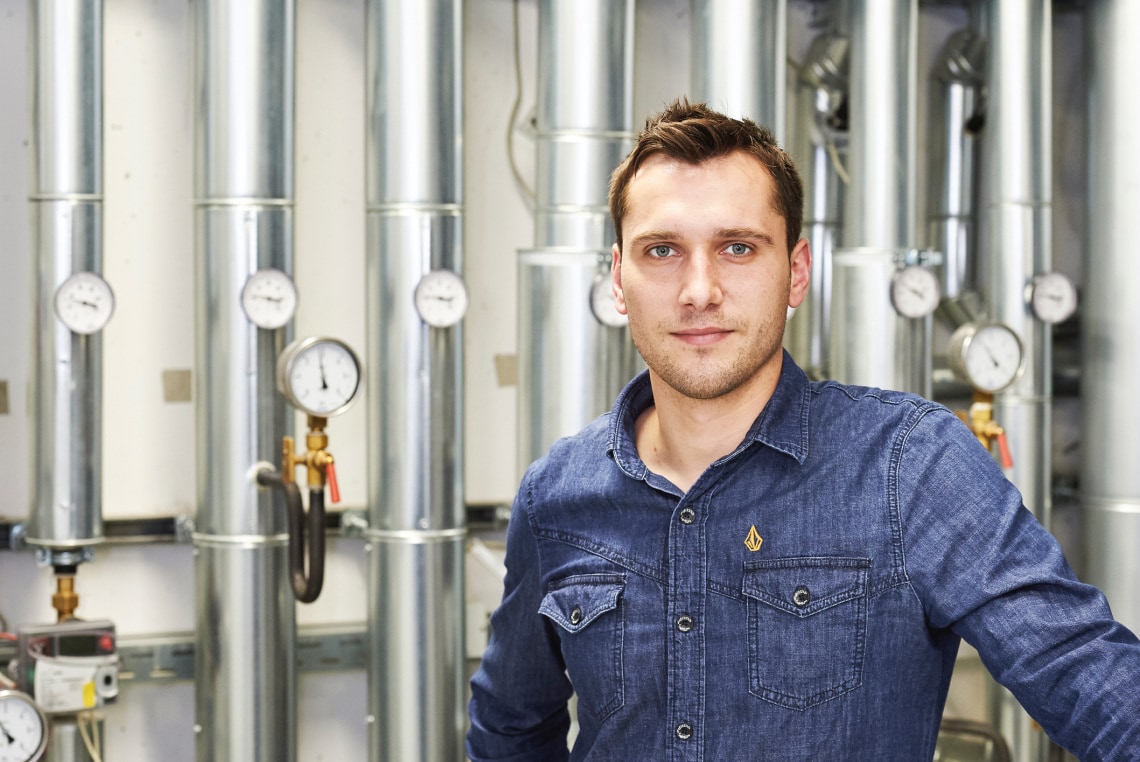
Pumps precisely controlled via the Building Management System (BMS)
Germany’s four World Cup titles evoke euphoric memories for generations of the country’s football fans. The stories behind these victories, and many other entertaining memories besides, are told at the German Football Museum in Dortmund. An ‘Action Arena’, an event area as well as catering facilities complement this unique football experience. Yet, the building’s multi-functional concept also presents particular challenges in terms of air-conditioning. To ensure that visitors enjoy an ideal ambient climate in all areas, a “new tactical concept” has been implemented for the air-conditioning system. This includes Wilo pumps controlled by the building management system to heat or cool areas as required.
Using the full ‘width of the pitch’
The requirements for the air-conditioning – i.e. the distribution of heating and cooling – could not have been more diverse.A glazed frontage, several metres in height, reveals first impressions of the world of German football – and must therefore be kept clear of fog at all times. The building also features a diverse array of spaces and rooms. In the underground multifunctional area, fans can test out their newly acquired knowledge on the pitch – and would break out in a sweat straight away if the space was not well air-conditioned. While visitors to the museum level amble at their leisure, a further floor provides an atmospheric space for events and galas – from sophisticated dinners to vibrant parties. The sporting and culinary highlight is certainly the various catering areas, where visitors can enjoy a relaxed break.
The ‘gameplan’ of heating and cooling distribution
In order to ensure ideal climatic conditions for this wide range of activities, the German Football Museum uses the entire ‘line-up’ of technical options available. Energy for heating is delivered by a 400 kW district heating connection. Cool air is generated by two cold water chillers, each with 300 kW power. To save as much energy as possible, they are also connected to a cooling battery with direct evaporation. The ventilation system is additionally equipped with an adiabatic cooling system. Warm and cold air is distributed by separate systems, adjusted to the type and profile of the respective usage: via the ventilation ducts, supplemented by surface temperature control, trench heaters or radiators.

The BMS monitors the pumps at all times, and can be used to adjust the system for difference climatic scenarios with just a few clicks.
The Building Management System enables ‘flexible tactics’
The entire heating and cooling circuits are controlled by the Building Management System (BMS). It also regulates circulators (‘Wilo-Stratos’, nominal connection diameter DN 65) for each circuit, depending on the time and temperature. This ensures that suitable temperatures are maintained in the individual areas of the building in a manner that is adequate yet economic, and timely yet necessary.
The exhibition areas on the first and second floors are heated and cooled by the ventilation system. Trench heaters are installed in the foyer. They heat the air along the high glazed surfaces. This deflects the cold air draughts during the colder months and therefore prevents fogging of the windows. The multifunctional arena has an additional underfloor heating system fitted, which is also used for passive cooling. This area caters for both elegant galas as well as all kinds of ‘action’, e.g. when it has been converted to a football field. And because the large glazing elements will generate the corresponding heat influx during summertime, recessed cooling cassettes are installed in the ceiling for peak load cover, in addition to the chilled supply air inflow. Ancillary rooms are heated by conventional radiators. Depending on the temperature level, Wilo pumps supply the required amount of energy to the individual heating and cooling circuits.
The integration of the pumps into the BMS is a crucial element for Andreas Heine, Technical Director of the German Football Museum: The request for heating or cooling is controlled by the outside temperature as well as by the preset regular opening hours of the museum. We can deviate from this programming for special events. And, thanks to the BMS, this can be done by a simple click or touch: the air-conditioning and heating systems are controlled via system diagrams displayed on touchscreens installed in the central engineering room. Temperature and time settings for each usage profile can be adjusted from the BMS office terminals. In the case of an evening event, for example, the dates, times and desired temperature levels are entered into the BMS schedule. Lead times required to reach the preset room temperature precisely at the right moment are calculated as a function of the outside temperature and determined by the BMS automatically. This changes can also be effected manually, so that areas of the building not used for events outside of opening hours automatically switch to the regular reduced, energy-saving temperature levels.
Quick transitions thanks to Wilo pump technology
The 21 Wilo high-efficiency pumps – 15 circulators for the heating supply and six for cooling distribution – make a significant contribution to limiting the building’s primary energy demand. The glandless circulators of the ‘Wilo-Stratos’ series (see box) feature an energy efficiency index of ≤ 0.20. This is the current benchmark set out by the Ecodesign Directive (ErP). Moreover, the pumps exploit the potential savings of the continuously adjustable EC motors through a so-called ‘Q-Limit’. This limits the volume flow in each distribution circuit to a preset value between 25 and 90 per cent of the maximum flow volume. When the preset value is reached, the pump will adjust its pump curve to keep in line with the limit. This makes it possible to adjust the flow rate quickly based on current requirements, whilst simultaneously and sustainably avoiding inefficient heating or cooling scenarios.
Wilo-Stratos: Top marks in energy consumption and communication: Circulator with EC motor
The ‘Wilo-Stratos’ glandless pump has been developed for use in hot-water heating systems, air-conditioning systems and closed cooling circuits. The energy efficiency index (EEI) for the single pump is ≤ 0.20. The limit of the volume flow (Q-Limit function) can be preset and allows for efficiency-boosting adjustments.
The pump features a total of four operating modes:
Constant speed (n=constant)
- Δp-c for constant differential pressure
- Δp-v for variable differential pressure
- Δp-T for temperature-controlled differential pressure
The EC motor offers all the benefits of continuous control plus the option of being controlled via a building management system. The ‘Wilo-Stratos’ can be equipped with Modbus, BACnet, CAN, LON, PLR, DP, Ext. Off, Ext. Min., SBM and Ext. Off/SBM interfaces. Hydraulic connections range from DN 32 to DN 100, with rated pressure of 6/10 bar and 16 bar as a special solution.



